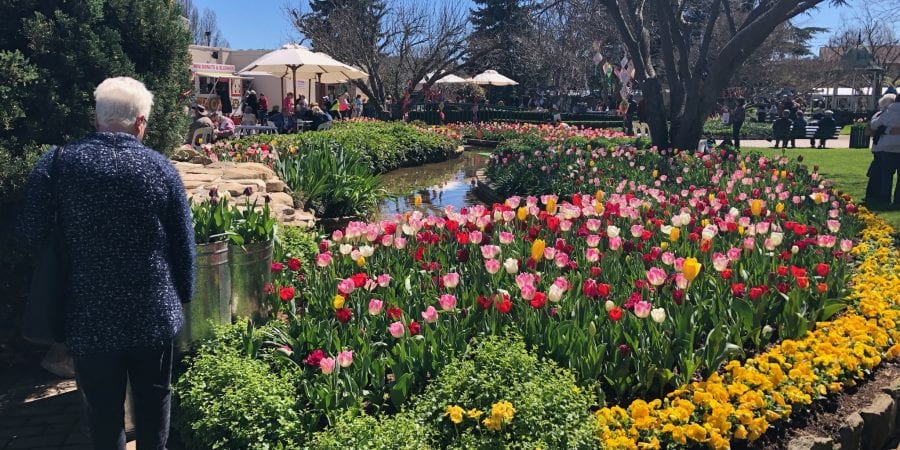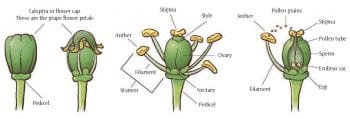If you’ve been following along with the blog over the last couple of weeks, you will have noticed I’ve mentioned “flowering” a couple of times.
Before we get too much further into the 2019/20 growing season, I should probably explain in a bit more detail what that is exactly.
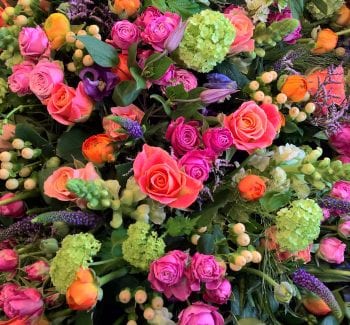 We’ve all seen a flower (some more than others – subtle hint to my husband…)…
We’ve all seen a flower (some more than others – subtle hint to my husband…)…
The main purpose of a flower, particularly the colourful petals, is to attract pollinators (like bees). The pollinators help with the fertilisation of the flower to create a fruit or seed. And while our own personal use of many flowers stops at their visual and aromatic attractiveness (along with promoting marital bliss), there is obviously more to it than that!
Also, some flowers are more important to us when it comes to the food we eat. And the wine we drink!
As it turns out, flowers are pretty complicated. So I’m going to break it down to the absolute basics (and steal, I mean borrow and reference, lots of pictures to help us along the way)…
The parts of a flower
This first picture is actually mine!
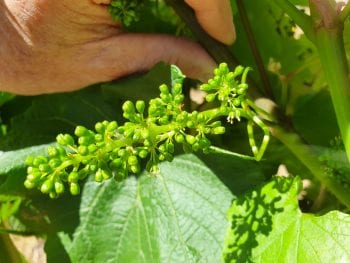
Every single one of those little round things is a flower. In this picture though, most of them are covered by the “cap”. So you can’t see the part of the flower.
Here is a better (even though I think mine is pretty good!) picture (thanks Jordan Winery!)…
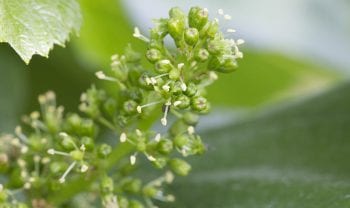
And one with some useful words on it (care of this site)…
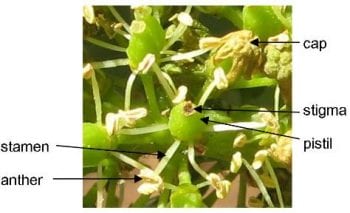
And an even better diagram (I found on the Lodi Wines website) of the whole set up (click on the image to see it up close)…
A “perfect” flower
Some of those words on that diagram above may look a little familiar (and are bringing back repressed memories from high school science). All you really need to know is that the flower of a grapevine is known as a “perfect” flower. That means that it has both male and female parts.
The male parts are called the stamen (made up of the anther and filament). The female parts are called the pistil (made up of the stigma, style and ovary).
Anyway, long story short… grapevine flowers can fertilise themselves! And because they are so close together they don’t need the help of bees to pollinate them. How clever!
Loving our blog? Sign up for weekly updates straight to your inbox here.
Every flower is a (potential) berry
Every one of those little flowers has the potential to turn into a berry on the bunch (full of delicious juice!).
The conditions around the time of flowering determine exactly how many of those flowers become fruit.
Some of you may remember (from this post) we had some not so great weather conditions during flowering last vintage, which was just the beginning of a pretty challenging year for most.
Other than the fact that I’ve had to light the fire again this week, fingers crossed the current season remains uneventful!
Champagne Shopping Morning – It’s back!
Are you a member of the Jockey Club?
You are? That’s amazing! And it means you can come along to this (getting close to being sold out as usual) event!
Get your tickets now!
Not a member of the Jockey Club? Seriously, what is wrong with you?! KIDDING! We love everyone equally!
But find out what you are missing out on here.
